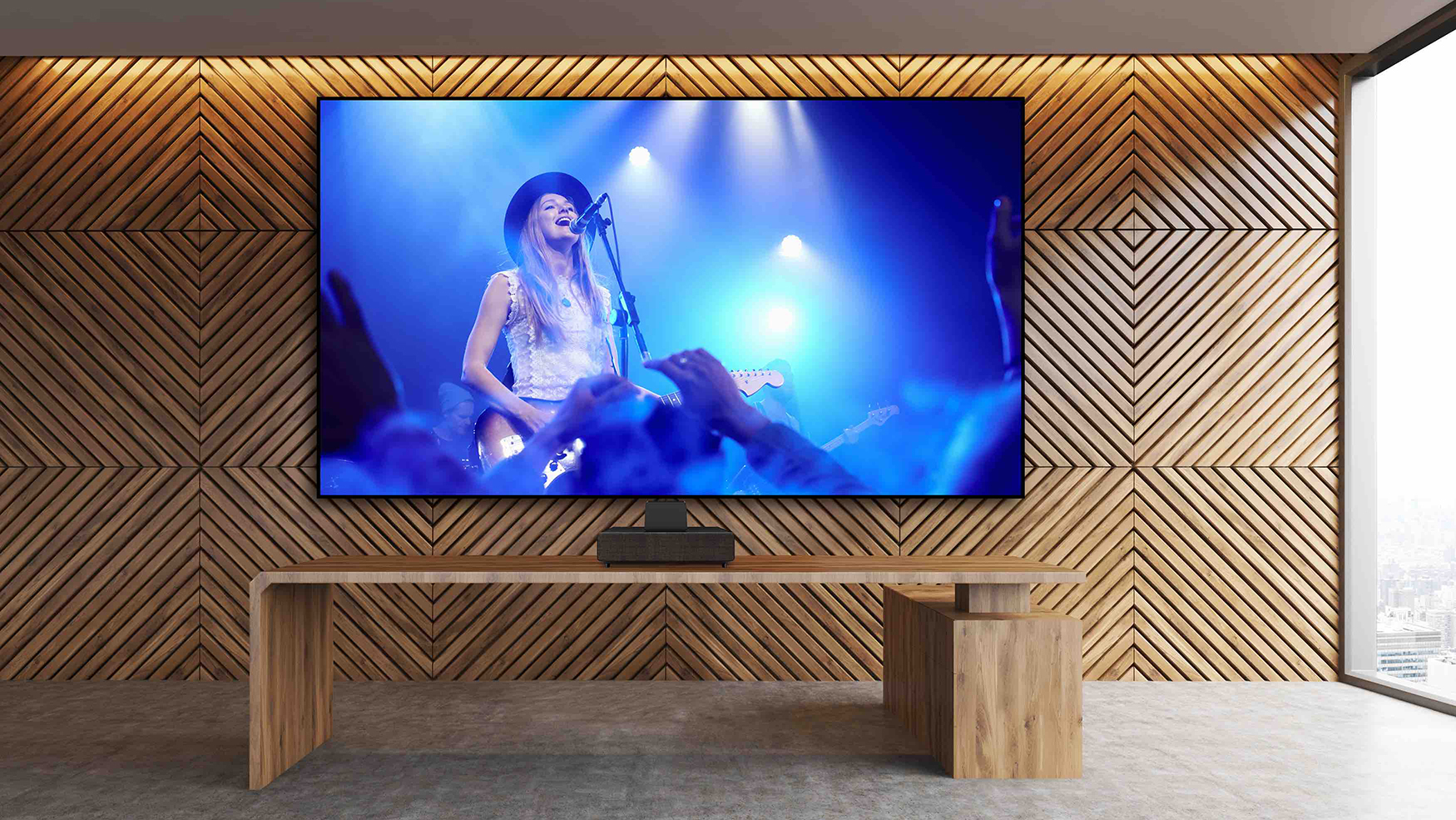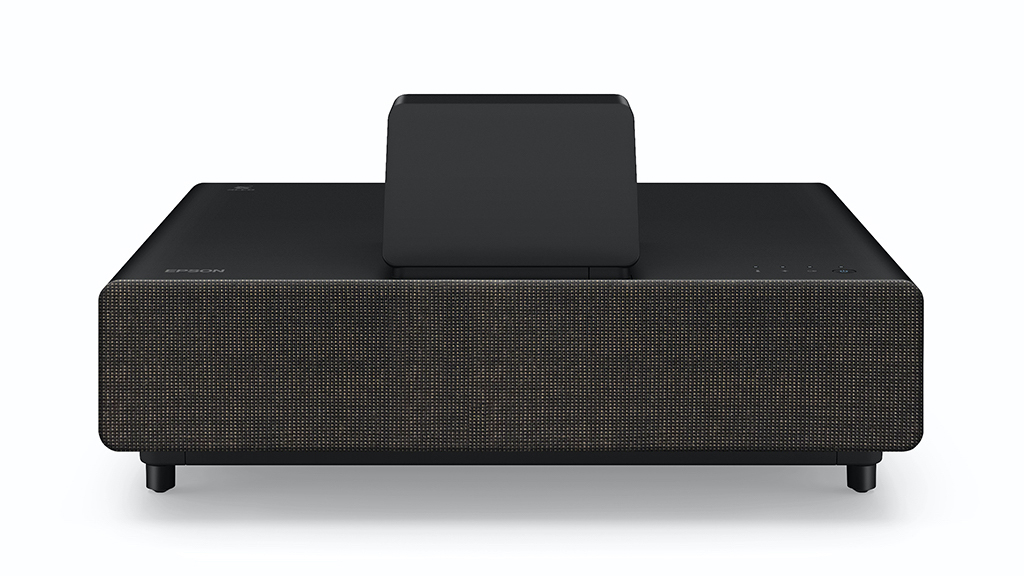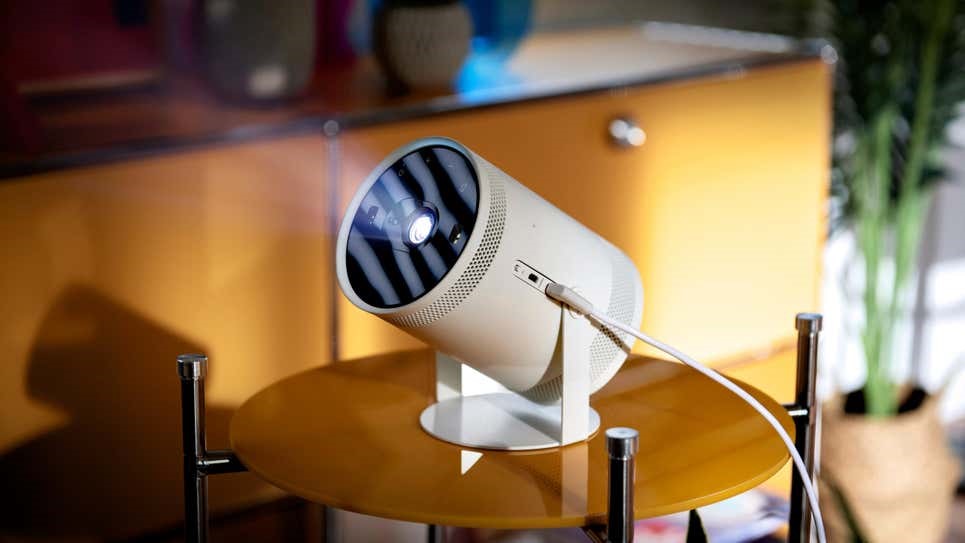Epson's 4K EH-LS500 laser projection 'TV' is now available in Australia
This ultra-short-throw wonder is available with or without a screen

First announced in October 2019, Epson's EH-LS500 laser projection TV promised to bridge the gap between... well, projectors and TVs. Now it's finally available in Australia to purchase in a variety of configurations paired with screens.
The EH-LS500 isn't really a TV under the traditional definition; it's a 4K Pro-UHD ultra-short-throw projector that offers a combination of laser light source brightness and smart TV-like abilities. In Australia, it's available for AU$5499 as a standalone unit, for AU$6599 with a 100-inch screen, or AU$7199 with a 120-inch screen.
While there's a white unit available in other regions, there's no word yet on whether that will be hitting Australian shores. For now, we've got the EH-LS500B, which is the black model.

“Even though panels are getting bigger and bigger, they can get nowhere near as big as a home theatre projector,” Epson Australia’s Bruce Bealby said at the event's launch last year. “The LS500 has a screen size of up to 130-inches — to put that into context that’s equivalent to four 65-inch panels.”
This screen size is delivered not by a ceiling or table projector but by a short-throw device which sits close to the wall, shining upwards to illuminate a screen or wall.
The laser light source, together with Epson’s 3LCD Technology, delivers both 4,000 lumens of both white and colour (other technologies have lower colour brightness than white brightness because of the use of a colour wheel), achieving a quoted 2,500,000:1 dynamic contrast ratio.
Long life is another benefit of laser light sources, with an expected 20,000 hours life from the lamp when used in Eco mode, which Epson equates to five hours use every day for 10 years.
Get the What Hi-Fi? Newsletter
The latest hi-fi, home cinema and tech news, reviews, buying advice and deals, direct to your inbox.
Resolution
The projector uses Epson’s 4K Pro-UHD, which uses a UHD input signal and delivers the High Dynamic Range information from 4K signals. Resolution is not native 4K, but rather uses a 1920 x 1080 panel pixel-shifted once to deliver around four million pixels, half the number of actual Ultra High Definition 4K.
Epson has strong arguments in favour of this technology over DLP, which uses multiple pixel-shifting to achieve actual UHD, noting the value of better brightness and contrast, and especially Epson’s use of larger 0.74-inch panels, compared with DLP’s 0.47-inch panel for the projectors using the DLP470TP micromirrors.
That's a big difference in area, so each pixel is larger, brighter and, all other things being equal, also less prone to noise. The same argument occurs in the camera industry, where the argument of ‘more pixels’ versus ‘larger pixels’ invariably comes down on the side of larger pixels. The benefit of this has already been proven by Epson’s EH-TW9400. The LS500 also features frame interpolation and Detail Enhancement functions.
Smarts and sound
The LS500 has three HDMI inputs, and has space behind the rear panel to accommodate a Chromecast or Amazon Fire TV stick, either of which will make it easy to stream shows, movies and more under control of a smart device. USB power is provided to power such devices.
While there is an HDMI ARC connection or an analogue audio output to integrate with an external sound system, the unit also includes two built-in 10W speakers in a neat-looking body.
An Ethernet network connection allows operation and status checks over a network from a computer or a smart device, and when using Epson iProjection for Windows or Mac, you can display up to four separate screens from the projector from up to 50 computers connected to the network.
Screen size
The effective screen size will be governed by the distance of the projector from your wall – for a 100-inch image the projector lens needs to be 65cm from the screen or wall, for a 130-inch image the distance needs to be 82cm, and the projector will extend out another 12cm beyond that lens distance.
Go measure your bench space! If it can’t be accommodated there, the LS500 can be ceiling-mounted to achieve the required throw distance. Of course the final brightness of your image and its relative imperviousness to ambient light conditions will also be related to your final image size.
What Hi-Fi?, founded in 1976, is the world's leading independent guide to buying and owning hi-fi and home entertainment products. Our comprehensive tests help you buy the very best for your money, with our advice sections giving you step-by-step information on how to get even more from your music and movies. Everything is tested by our dedicated team of in-house reviewers in our custom-built test rooms in London, Reading and Bath. Our coveted five-star rating and Awards are recognised all over the world as the ultimate seal of approval, so you can buy with absolute confidence.

